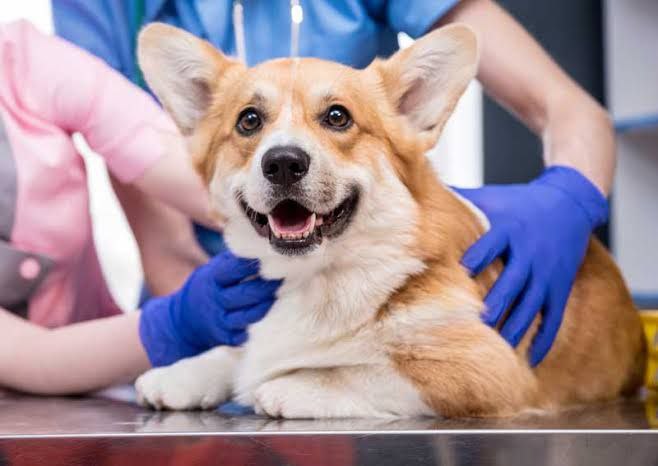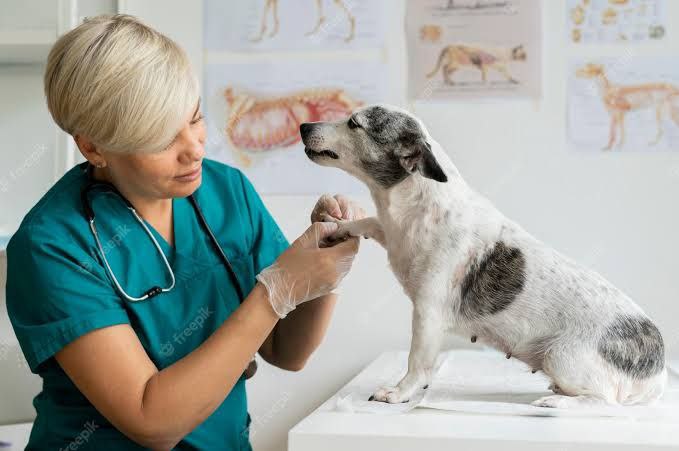How to Force Feed a Dog Who Won’t Eat
Assess the Situation
If your dog is refusing to eat, it’s essential to identify the underlying cause. A loss of appetite can be a symptom of various health issues, including dental problems, gastrointestinal disorders, infections, or even emotional distress. Before resorting to force-feeding, consider the following steps:
- Consult a Veterinarian
- Schedule a visit to the veterinarian to rule out any underlying medical conditions that may be causing your dog’s lack of appetite. The vet will perform a thorough examination and may recommend further diagnostic tests if necessary.
- Follow Veterinary Recommendations
- If your veterinarian prescribes medication, changes in diet, or specific treatments, follow their instructions carefully. These interventions may resolve the underlying issue and restore your dog’s appetite without the need for force-feeding.

Determining the Need for Force Feeding
If your dog’s condition requires immediate nutritional support and force-feeding becomes necessary, consider the following steps:
- Seek Veterinary Guidance
- Consult with your veterinarian to confirm if force-feeding is the appropriate course of action based on your dog’s specific condition. They can provide guidance on the best approach, necessary precautions, and potential risks associated with force-feeding.How to Force Feed a Dog Who Won’t Eat
- Confirm Proper Hydration
- Assess your dog’s hydration status by checking their gums. If they are sticky or dry, your dog may be dehydrated. If dehydration is present, consult your veterinarian for guidance on administering fluids to your dog before attempting force-feeding.How to Force Feed a Dog Who Won’t Eat
Preparing for Force Feeding
Before initiating force-feeding, make the necessary preparations to ensure the process is as safe and stress-free as possible:
- Gather the Supplies
- Collect the necessary supplies, including a syringe or feeding tube (if recommended by your veterinarian), appropriate food formulated for force-feeding, warm water, towels or blankets for stability, and any prescribed medications
- Create a Calm Environment
- Choose a quiet and comfortable space where you can perform the force-feeding without distractions. Minimize noise and ensure your dog feels secure to reduce stress and resistance during the process.
Force-Feeding Techniques

There are two main techniques for force-feeding dogs: syringe feeding and tube feeding. These methods should be performed carefully and gently to avoid causing harm or distress to your dog. It’s crucial to follow your veterinarian’s instructions or seek their guidance before attempting force-feeding.How to Force Feed a Dog Who Won’t Eat
Syringe Feeding
Syringe feeding involves administering food through a syringe without the use of a feeding tube. Follow these steps:
- Prepare the Food
- Mix the prescribed food with warm water to create a smooth, easily syringeable consistency. Ensure the mixture is at an appropriate temperature, not too hot or too cold.
- Position the Dog
- Position your dog in a comfortable and secure position, such as wrapping them in a towel or blanket. This will help restrain them gently and provide stability during the feeding process.How to Force Feed a Dog Who Won’t Eat
- Administer the Food
- Gently open your dog’s mouth and slowly inject a small amount of the food mixture into the side of their mouth, aiming for the back of the tongue. Be careful not to overwhelm or cause choking. Pause between each syringe load to allow your dog to swallow.How to Force Feed a Dog Who Won’t Eat
- Monitor Progress
- Observe your dog’s reaction and tolerance to the feeding. If they show signs of discomfort or distress, stop the process and consult your veterinarian immediately.
Tube Feeding
Tube feeding involves the insertion of a feeding tube into your dog’s esophagus
Tube Feeding (Continued)
Tube feeding may be necessary for dogs who are unable to consume food orally or require long-term nutritional support. It is a more advanced technique and should only be performed under the guidance and supervision of a veterinarian. The specific steps may vary depending on the type of feeding tube used. Here’s a general overview:How to Force Feed a Dog Who Won’t Eat
- Consult Your Veterinarian
- Work closely with your veterinarian to determine the appropriate type and size of feeding tube for your dog. They will provide detailed instructions on how to insert and secure the tube properly.How to Force Feed a Dog Who Won’t Eat
- Prepare the Food
- Follow your veterinarian’s instructions on preparing the prescribed food mixture for tube feeding. Ensure it is at an appropriate temperature and consistency for smooth delivery through the tube.How to Force Feed a Dog Who Won’t Eat
- Insert the Feeding Tube
- Under the guidance of your veterinarian, gently insert the feeding tube through your dog’s nostril or mouth into the esophagus. Take care to avoid causing any discomfort or injury to your dog. This procedure requires precision and should be performed by a trained professional.How to Force Feed a Dog Who Won’t Eat
- Administer the Food
- Connect the feeding tube to the syringe or pump as instructed by your veterinarian. Slowly and steadily deliver the prescribed amount of food into the tube. Follow the recommended feeding schedule and monitor your dog’s response closely.How to Force Feed a Dog Who Won’t Eat
- Maintain Tube Hygiene
- Regularly clean and maintain the feeding tube as per your veterinarian’s instructions to prevent complications or infections. Keep the insertion site clean and monitor for any signs of irritation or inflammation.How to Force Feed a Dog Who Won’t Eat
- Regular Veterinary Check-ups
- Schedule regular follow-up appointments with your veterinarian to assess your dog’s progress, make adjustments to the feeding regimen if necessary, and ensure the tube is functioning properly.
Remember, force-feeding should be seen as a temporary measure until the underlying cause of your dog’s appetite loss can be addressed. It’s crucial to work closely with your veterinarian to determine the best approach and to monitor your dog’s overall health and progress throughout the process. Patience, gentleness, and a calm environment are essential to reduce stress and discomfort for your dog during this time.How to Force Feed a Dog Who Won’t Eat
| Force Feeding Techniques | Description |
|---|---|
| Syringe Feeding | Administering food through a syringe without a feeding tube. |
| Steps for Syringe Feeding | |
| 1. Prepare the Food | Mix prescribed food with warm water to create a smooth consistency. |
| 2. Position the Dog | Securely position the dog, providing stability during the feeding process. |
| 3. Administer the Food | Gently open the dog’s mouth and slowly inject small amounts of the food mixture into the side of the mouth. |
| 4. Monitor Progress | Observe the dog’s reaction and tolerance to the feeding. Stop if there is any discomfort or distress. |
| Tube Feeding | Inserting a feeding tube into the esophagus for long-term nutritional support. |
| Steps for Tube Feeding | |
| 1. Consult Your Veterinarian | Work closely with your veterinarian to determine the appropriate feeding tube and receive detailed instructions. |
| 2. Prepare the Food | Follow instructions to prepare the prescribed food mixture for tube feeding. |
| 3. Insert the Feeding Tube | Gently insert the feeding tube through the nostril or mouth into the esophagus. |
| 4. Administer the Food | Connect the feeding tube to a syringe or pump and slowly deliver the prescribed food into the tube. |
| 5. Maintain Tube Hygiene | Regularly clean and maintain the feeding tube as instructed by your veterinarian. |
| 6. Regular Veterinary Check-ups | Schedule follow-up appointments with your veterinarian to monitor progress and make necessary adjustments. |
| FAQ | Answer |
|---|---|
| What is force feeding? | Force feeding is a technique used to provide necessary nutrition to a dog who is refusing to eat voluntarily. |
| When is force feeding necessary? | Force feeding may be necessary when a dog is unable or unwilling to eat due to medical conditions or recovery from surgery. |
| How do I know if my dog needs force feeding? | Consult with your veterinarian to determine if force feeding is appropriate based on your dog’s condition. |
| What are the risks of force feeding? | Force feeding carries some risks, including aspiration pneumonia or injury if not performed correctly. Always consult with your veterinarian for proper guidance. |
| How should I prepare the food for force feeding? | Follow your veterinarian’s instructions on preparing a suitable food mixture for force feeding. |
| Can I use regular dog food for force feeding? | In some cases, a specialized food may be recommended. Follow your veterinarian’s advice on the appropriate diet for force feeding. |
| Can I force feed my dog on my own? | Force feeding should be done under the guidance and supervision of a veterinarian to ensure the safety and well-being of your dog. |
| Are there alternative feeding methods to force feeding? | Depending on your dog’s condition, alternative methods such as appetite stimulants, syringe feeding, or feeding tubes may be considered. Consult with your veterinarian for appropriate options.How to Force Feed a Dog Who Won’t Eat |
| How often should I force feed my dog? | The frequency and amount of force feeding will depend on your dog’s specific needs and condition. Your veterinarian will provide instructions tailored to your dog’s situation.How to Force Feed a Dog Who Won’t Eat |
| Will force feeding help my dog regain its appetite? | Force feeding is intended as a temporary measure to provide essential nutrition. Identifying and addressing the underlying cause of the appetite loss is crucial for long-term improvement.How to Force Feed a Dog Who Won’t Eat |
Read More:
